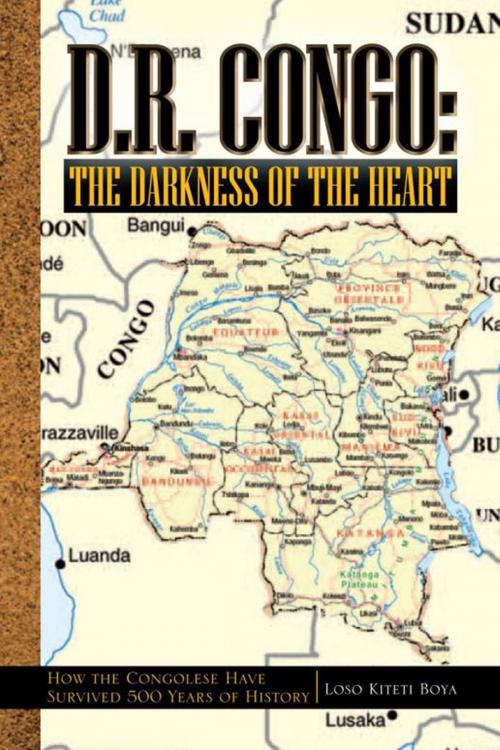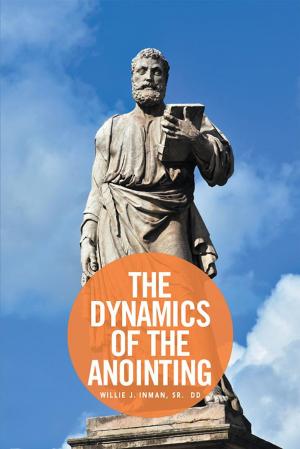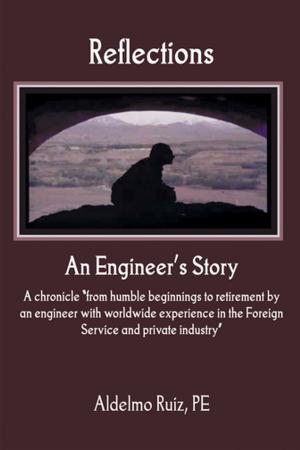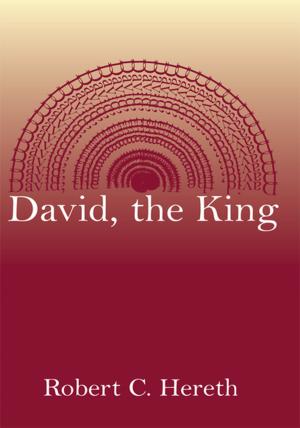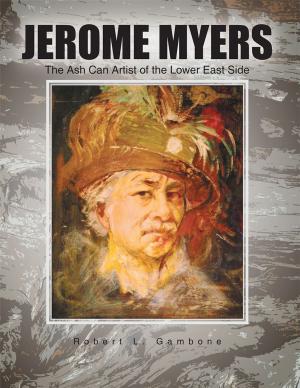D.R. Congo: the Darkness of the Heart
How the Congolese Have Survived 500 Years of History
Nonfiction, Social & Cultural Studies, Political Science, Government, Social Policy, History, Africa| Author: | Loso Kiteti Boya | ISBN: | 9781450082501 |
| Publisher: | Xlibris US | Publication: | May 19, 2010 |
| Imprint: | Xlibris US | Language: | English |
| Author: | Loso Kiteti Boya |
| ISBN: | 9781450082501 |
| Publisher: | Xlibris US |
| Publication: | May 19, 2010 |
| Imprint: | Xlibris US |
| Language: | English |
Book Synopsis: This book recounts from the perspective of a Congolese native the five-hundred-year journey of the people of the Democratic Republic of Congo. It analyzes dispassionately the facts of the turbulent history of the country and its continuing impact on the life of the modern-day Congolese. In the book, we set out to begin the search for the Congolese answers to the DR Congos historical paradox of a very rich country living a very poor life in a neighborhood in which it is the biggest and yet the weakest country. We travel back five hundred years to rediscover the ancient kingdom of Congo and look closely at its people, institutions, value and belief systems, customs and practices and try to establish the linkages between the present cultural values, belief system, and practices of the modern-day Congolese with those of their past. Through the revisiting of the past, we try to identify the ways and means of a more effective strategy for social, political, and economic renaissance in the DR Congo. Although a diary, the book is not a chronological presentation of the Congos history. The reader can expect to travel back and forth on the meandering road of the Congolese journey. The DR Congo is a land of ecological gigantism and an environmental Garden of Eden. It has the second largest freshwater river in the world, the Congo River, a powerful source of clean energy, and the second largest tropical rain forest in the world; the largest number of big lakes in Africa, including Lake Tanganyika; one of the largest assortment of minerals and precious metals and gems in the world, including uranium; and a large landmass of 906,000 square miles stretching over two time zones with a population of less than seventy million, translating into one the lowest population densities in the world. Such an array of diverse and rich natural resources and the extraordinary economic power potential of DR Congo have always attracted envy and invasions from foreign countries, multinational companies, and individuals over the centuries, the latest being the attack of the combined armies of Rwanda, Uganda, and Burundi in August 1998. The history of the DR Congo is also the history of the darkness of the human heart, extreme cruelty and violence, greed and selfishness by the early European explorers, the slave traders, the Zanzibari Arab slave merchants of the last centuries, and the neocolonialists and cold warriors of the twentieth century. It is the history of treason of the Congo by the Congolese, the betrayal of the public trust of the people, and of the pursuit of power at all costs and bad management of the economy by the Congolese leaders and the politicians, from the medieval kings of the kingdom of the Congo to the present-day ruling class. The book follows the less publicized but crucial journeys of the numerous Congolese slaves to the Americas, documenting their early settlements in the United States, the Caribbean Islands, and Brazil and reconnecting their present-day descendants in the Americas to their Congolese roots and ancestry.
Book Synopsis: This book recounts from the perspective of a Congolese native the five-hundred-year journey of the people of the Democratic Republic of Congo. It analyzes dispassionately the facts of the turbulent history of the country and its continuing impact on the life of the modern-day Congolese. In the book, we set out to begin the search for the Congolese answers to the DR Congos historical paradox of a very rich country living a very poor life in a neighborhood in which it is the biggest and yet the weakest country. We travel back five hundred years to rediscover the ancient kingdom of Congo and look closely at its people, institutions, value and belief systems, customs and practices and try to establish the linkages between the present cultural values, belief system, and practices of the modern-day Congolese with those of their past. Through the revisiting of the past, we try to identify the ways and means of a more effective strategy for social, political, and economic renaissance in the DR Congo. Although a diary, the book is not a chronological presentation of the Congos history. The reader can expect to travel back and forth on the meandering road of the Congolese journey. The DR Congo is a land of ecological gigantism and an environmental Garden of Eden. It has the second largest freshwater river in the world, the Congo River, a powerful source of clean energy, and the second largest tropical rain forest in the world; the largest number of big lakes in Africa, including Lake Tanganyika; one of the largest assortment of minerals and precious metals and gems in the world, including uranium; and a large landmass of 906,000 square miles stretching over two time zones with a population of less than seventy million, translating into one the lowest population densities in the world. Such an array of diverse and rich natural resources and the extraordinary economic power potential of DR Congo have always attracted envy and invasions from foreign countries, multinational companies, and individuals over the centuries, the latest being the attack of the combined armies of Rwanda, Uganda, and Burundi in August 1998. The history of the DR Congo is also the history of the darkness of the human heart, extreme cruelty and violence, greed and selfishness by the early European explorers, the slave traders, the Zanzibari Arab slave merchants of the last centuries, and the neocolonialists and cold warriors of the twentieth century. It is the history of treason of the Congo by the Congolese, the betrayal of the public trust of the people, and of the pursuit of power at all costs and bad management of the economy by the Congolese leaders and the politicians, from the medieval kings of the kingdom of the Congo to the present-day ruling class. The book follows the less publicized but crucial journeys of the numerous Congolese slaves to the Americas, documenting their early settlements in the United States, the Caribbean Islands, and Brazil and reconnecting their present-day descendants in the Americas to their Congolese roots and ancestry.
